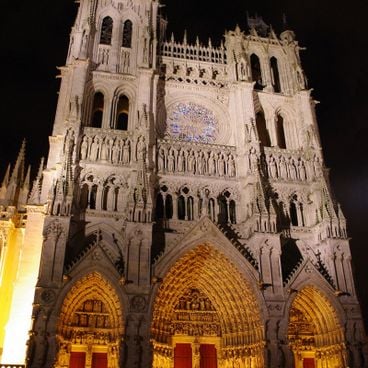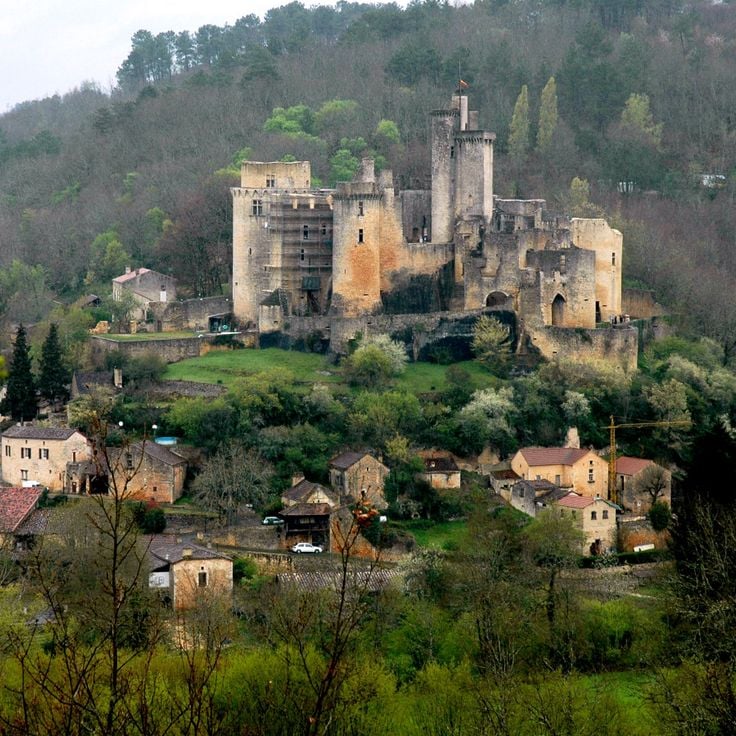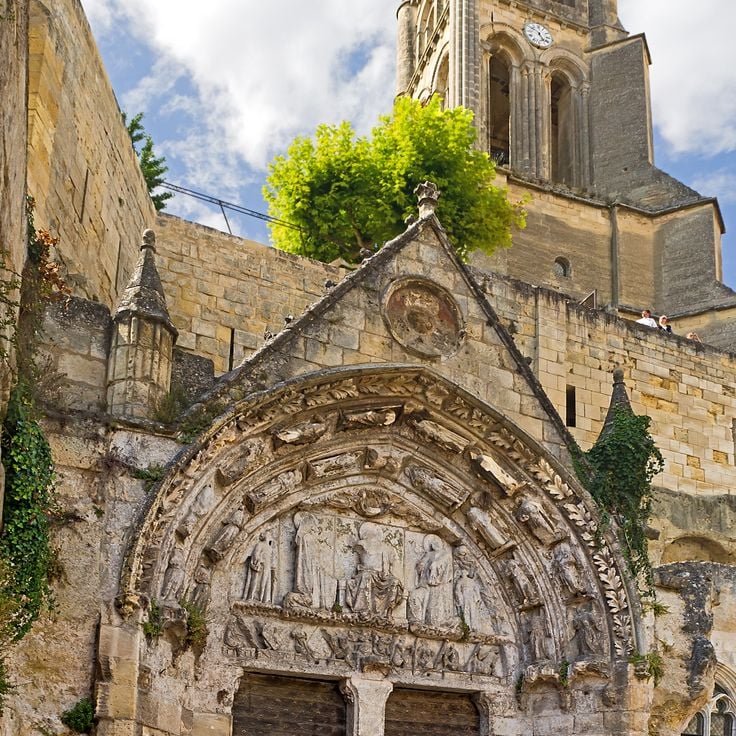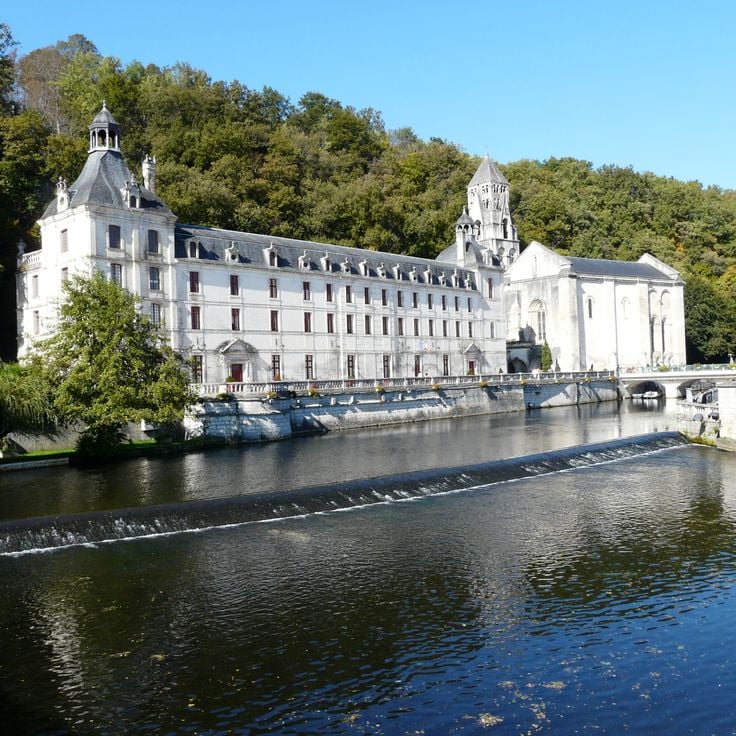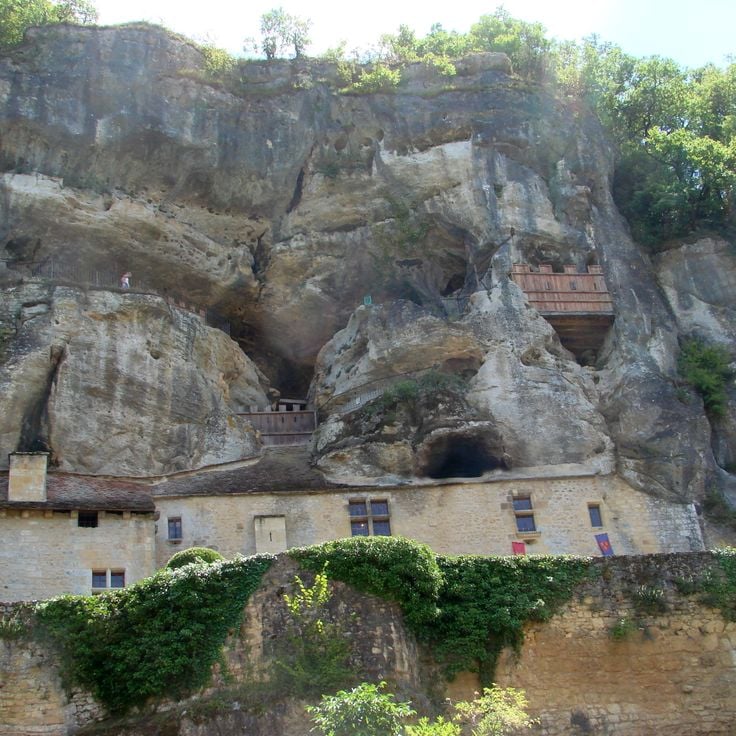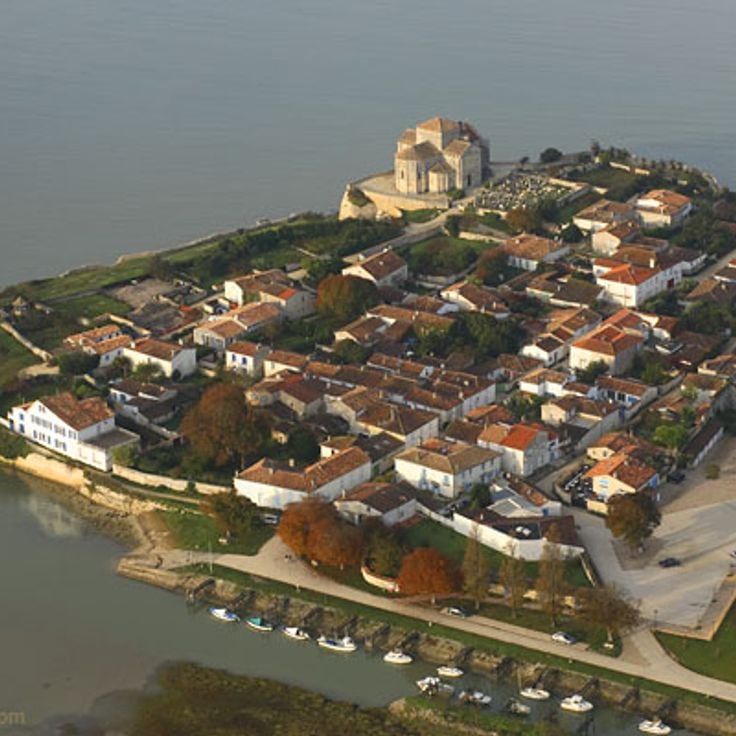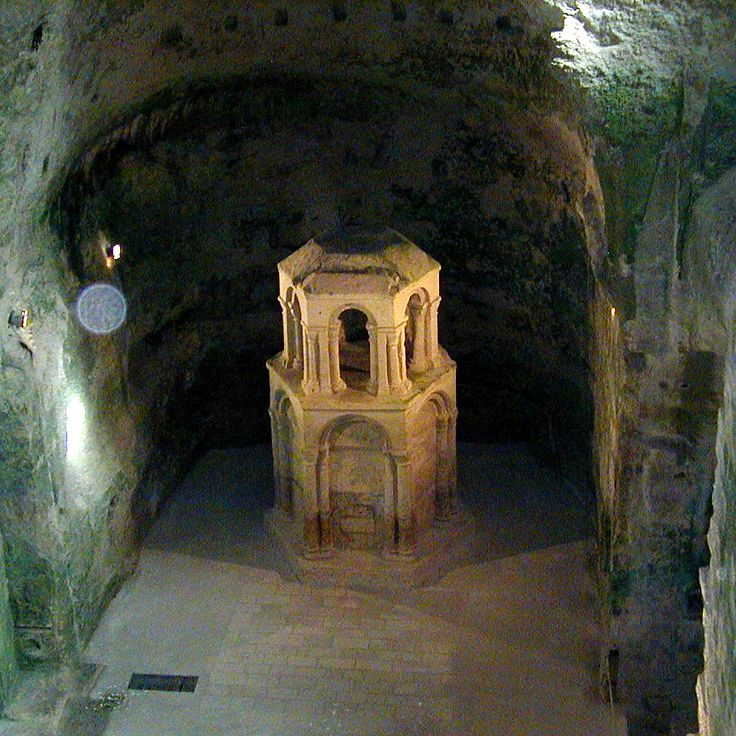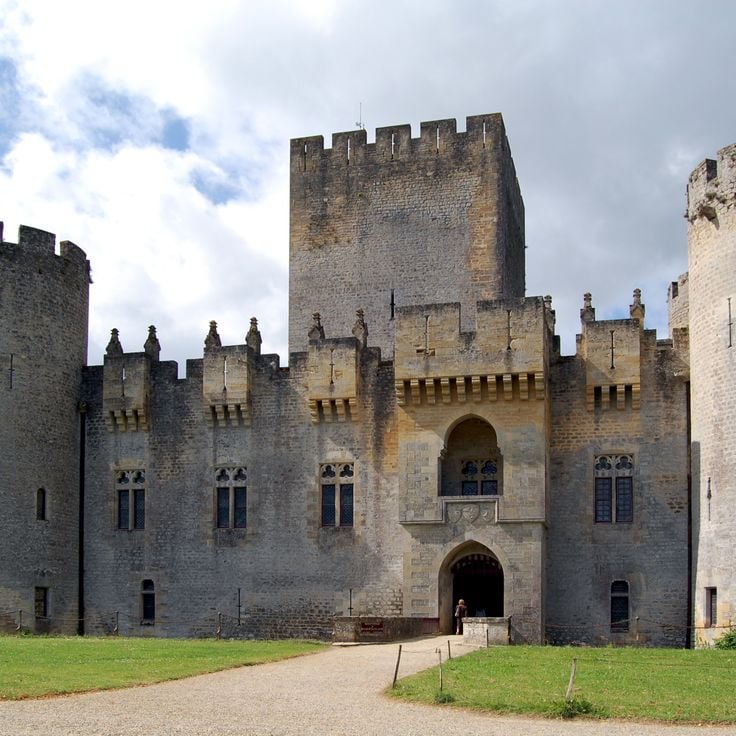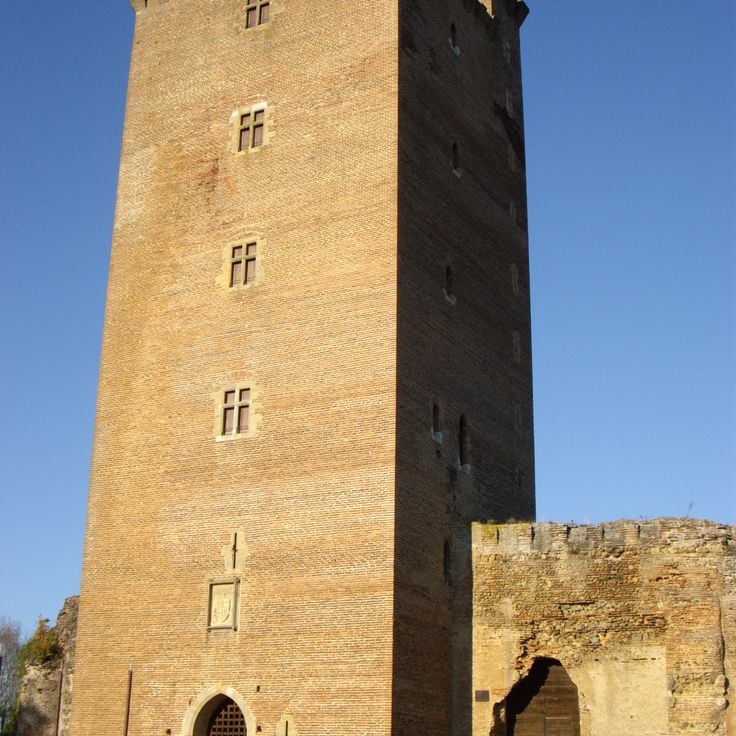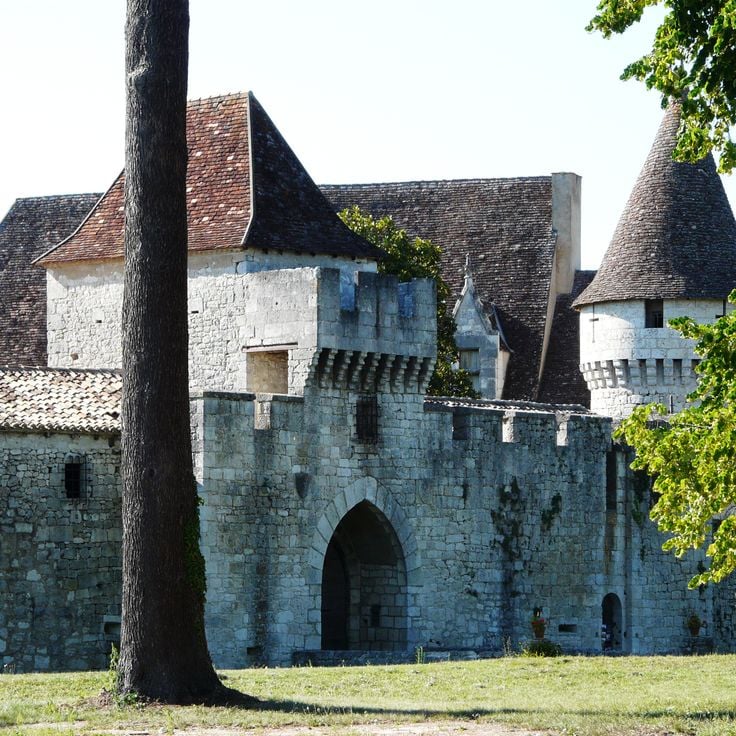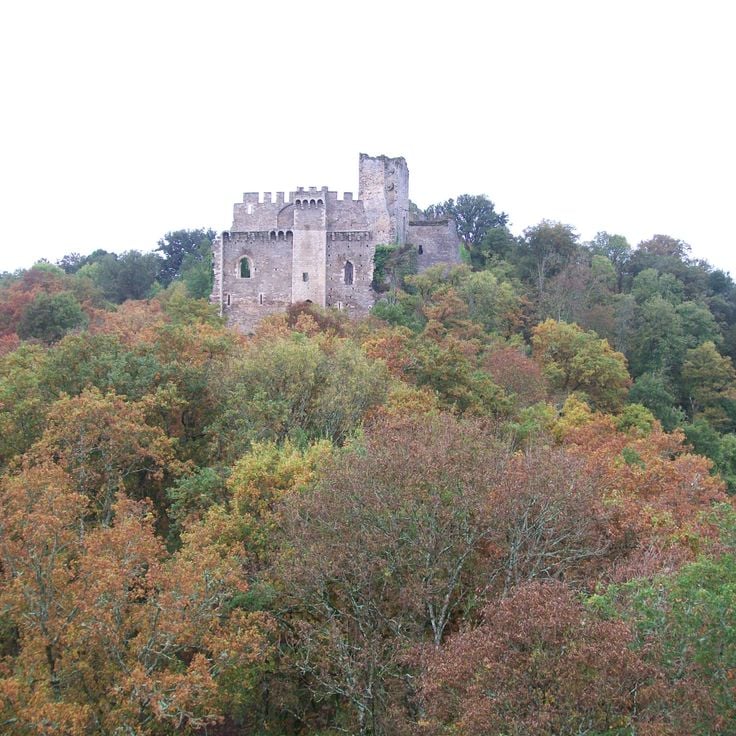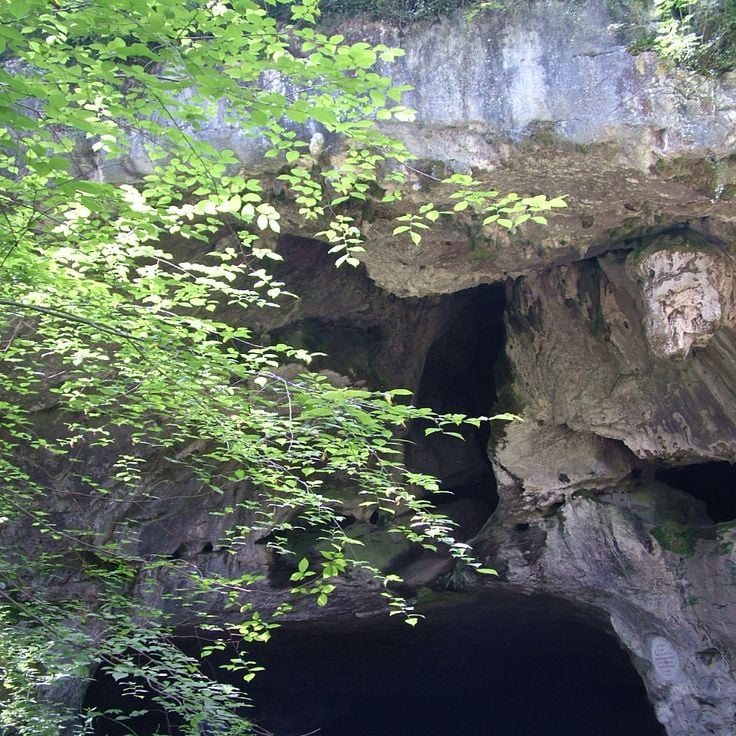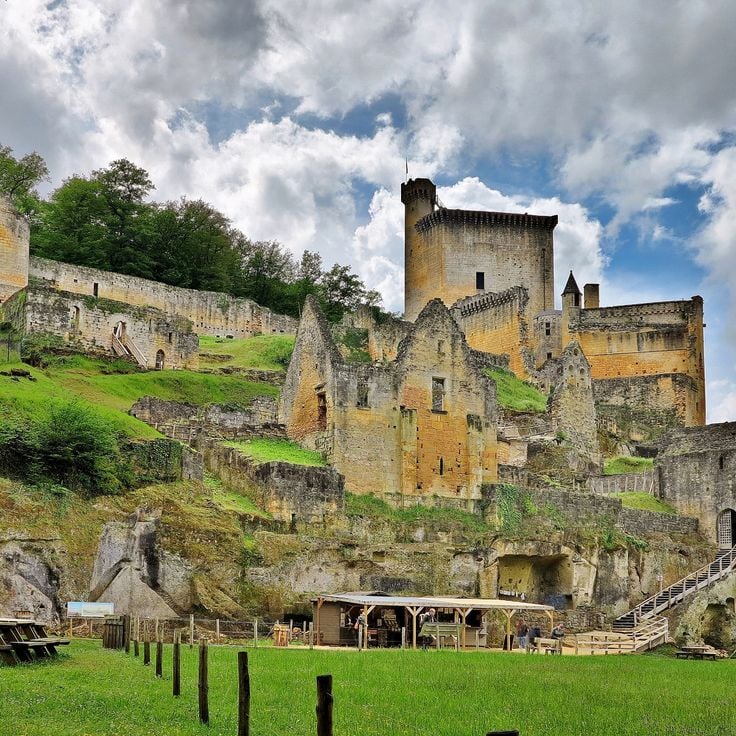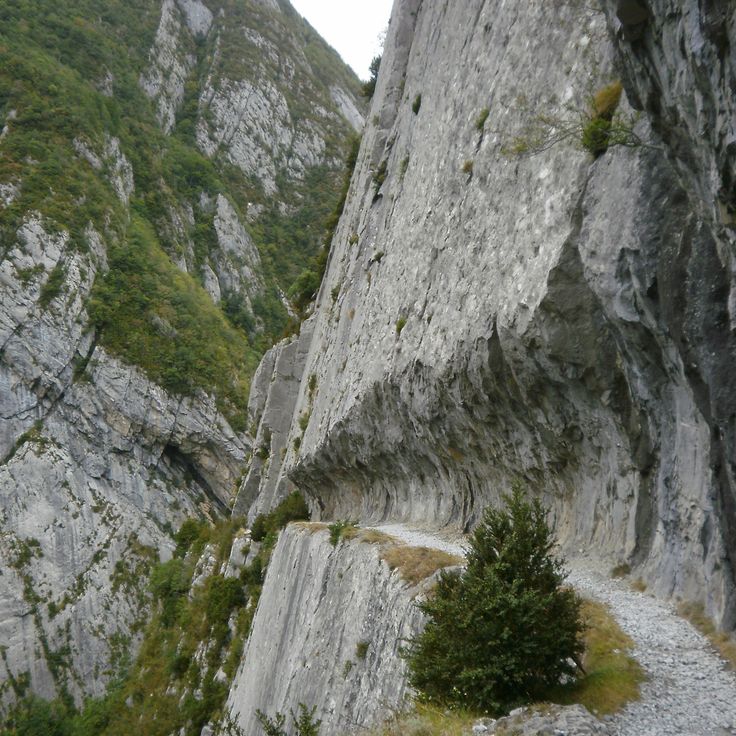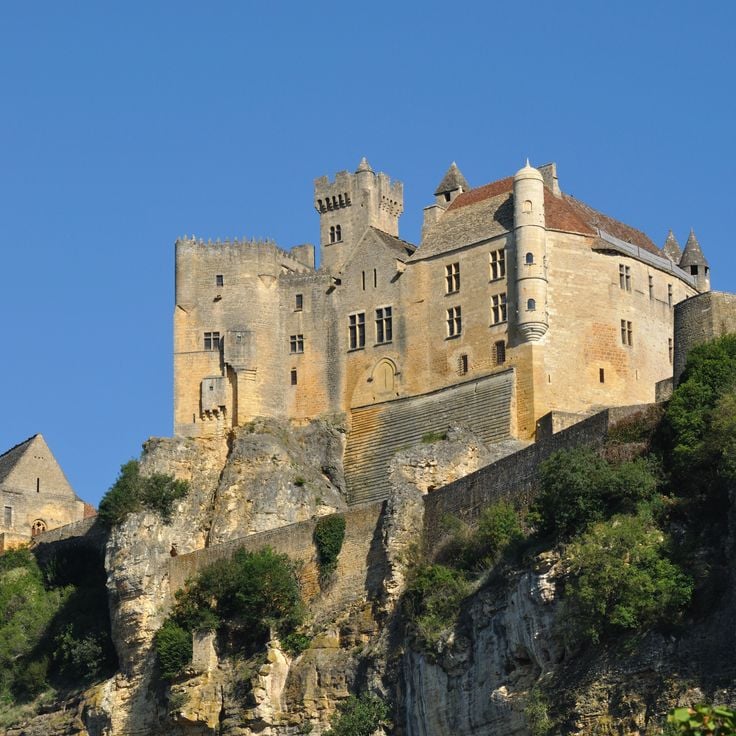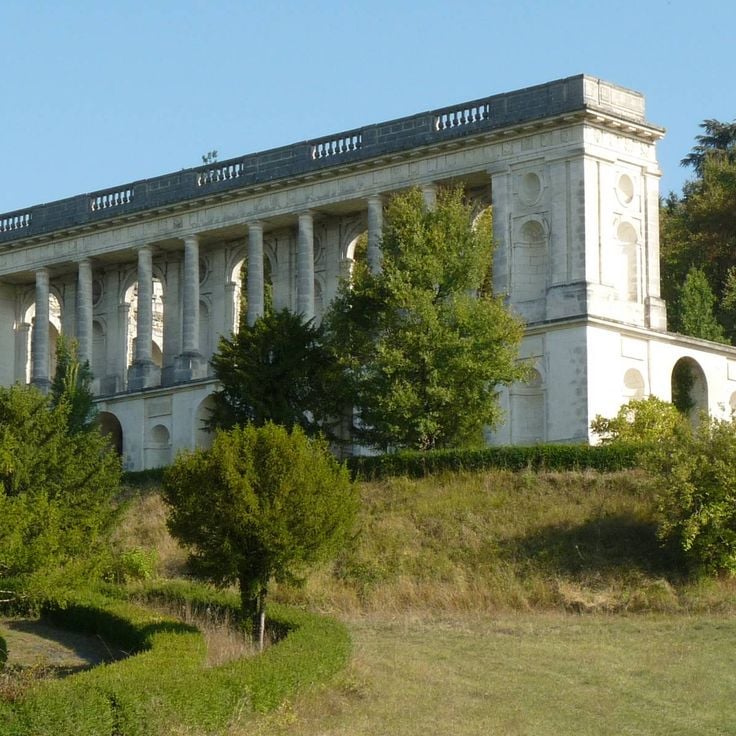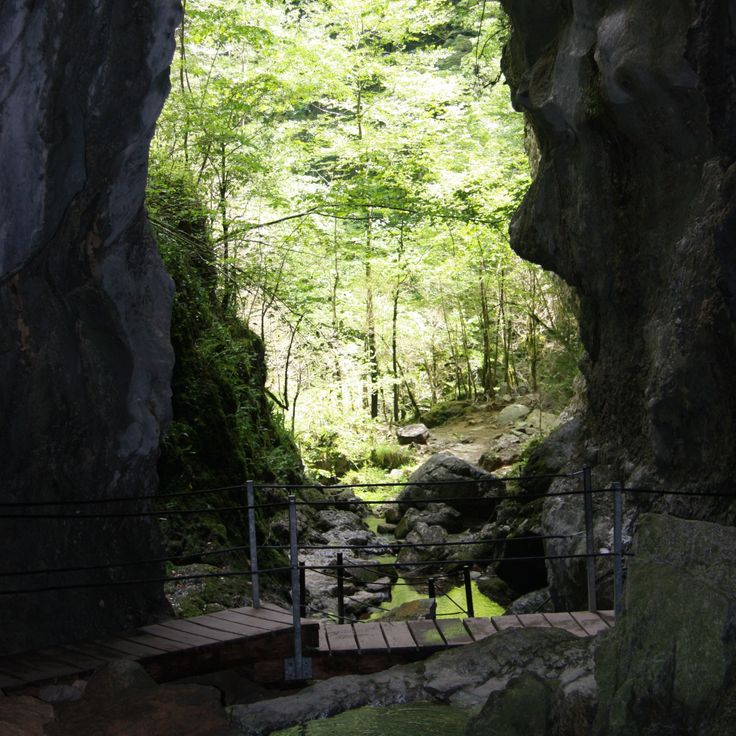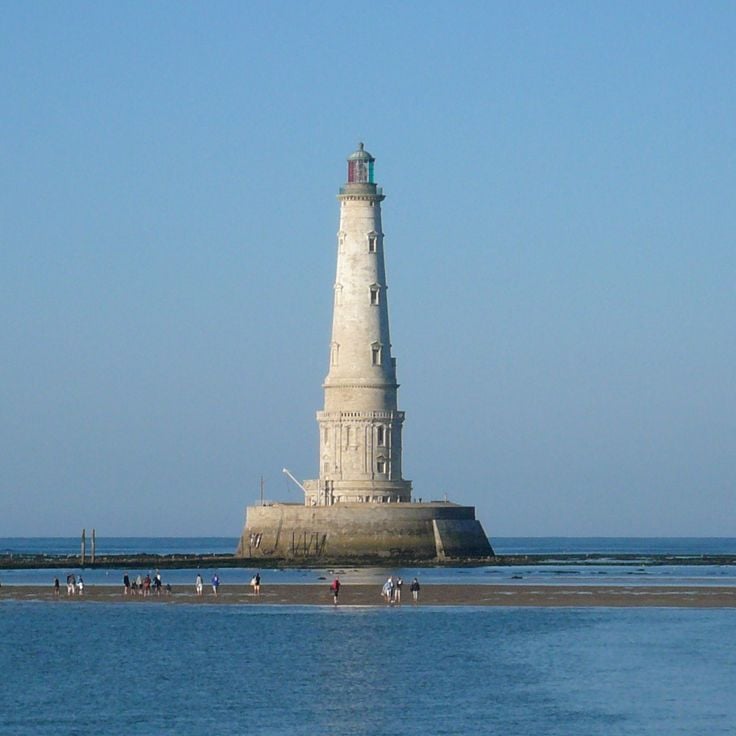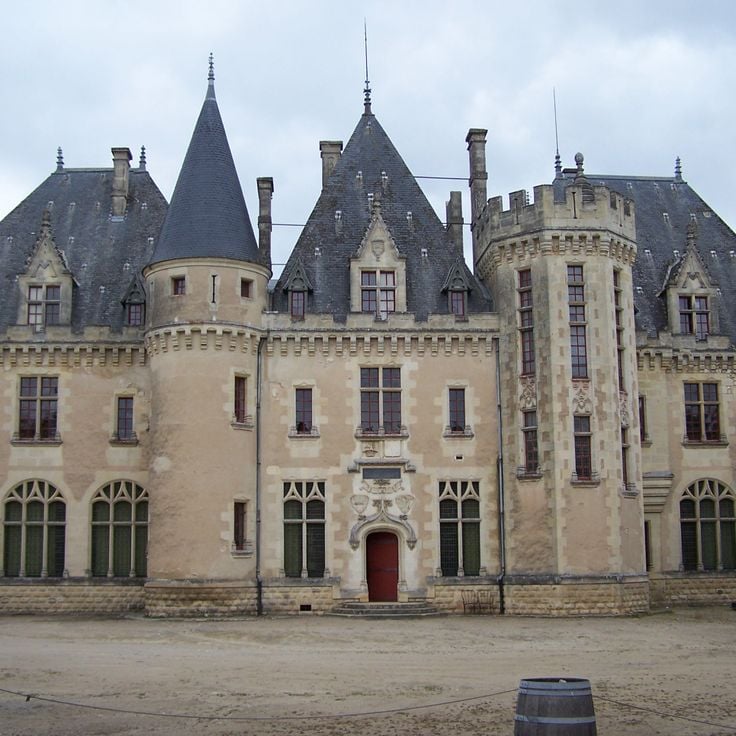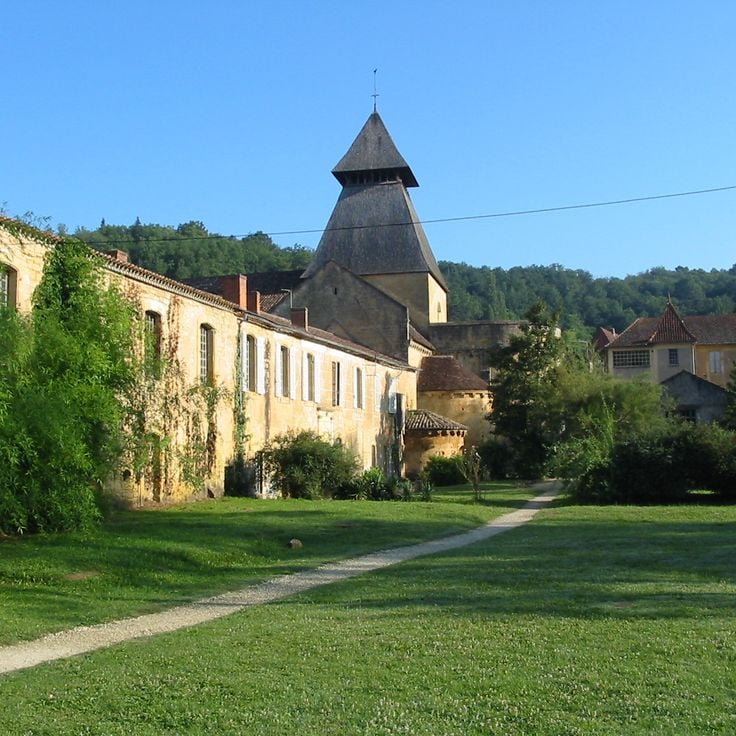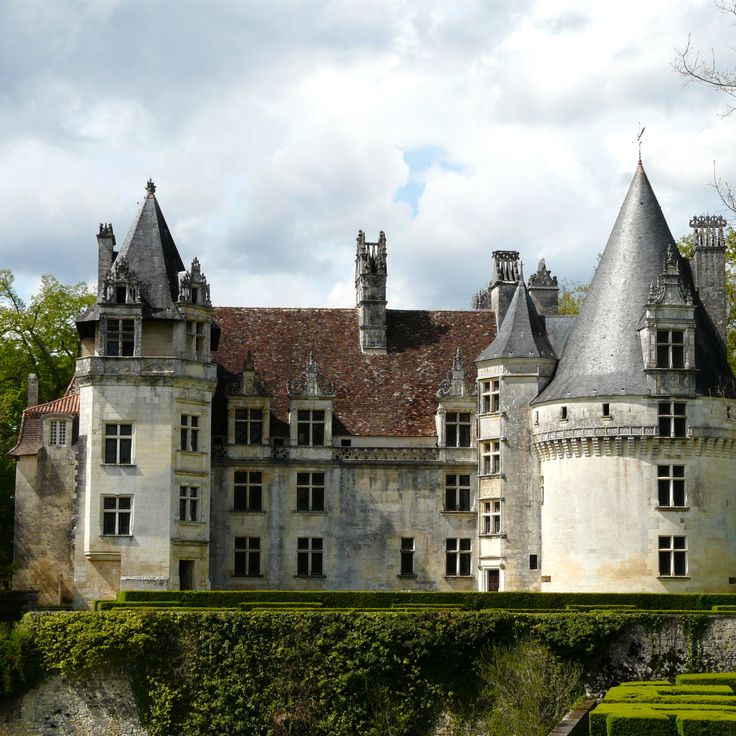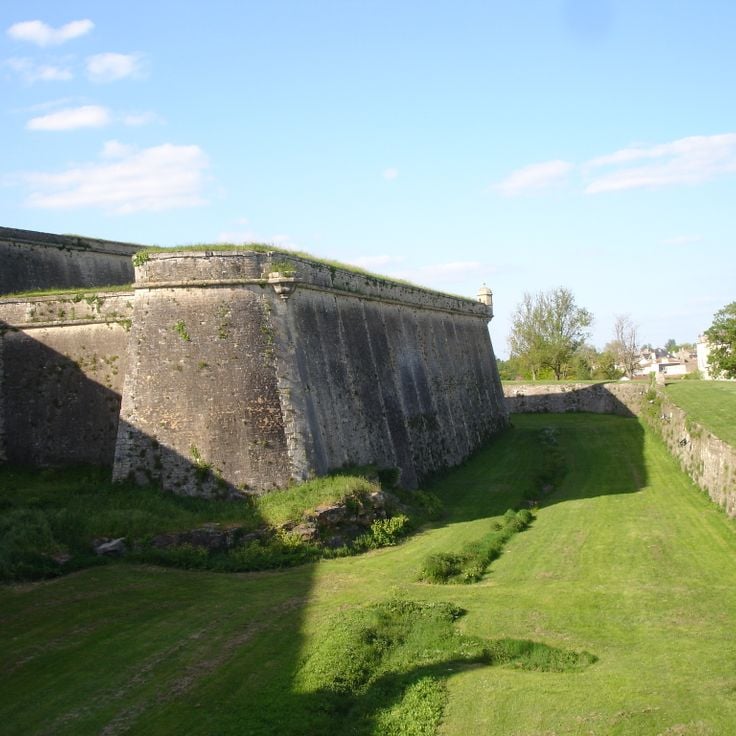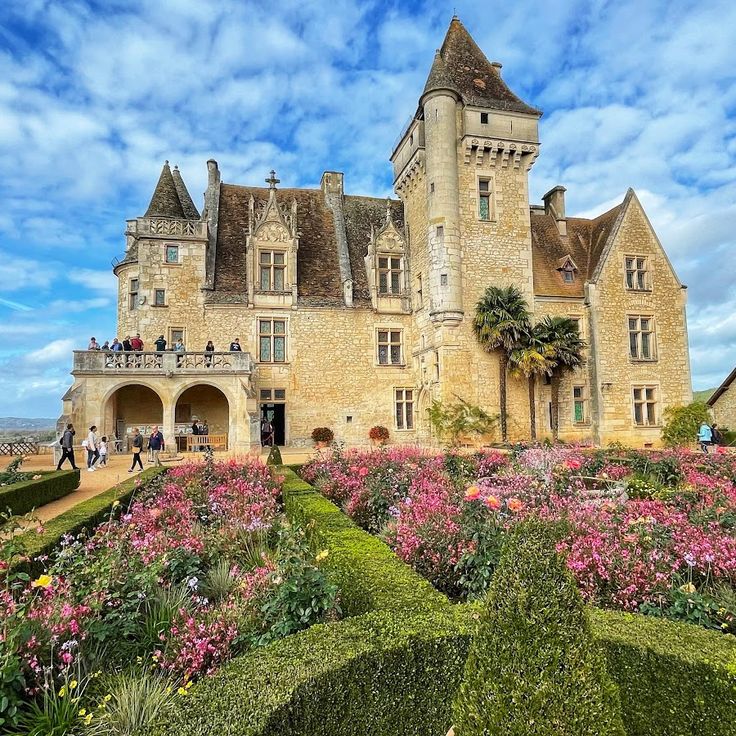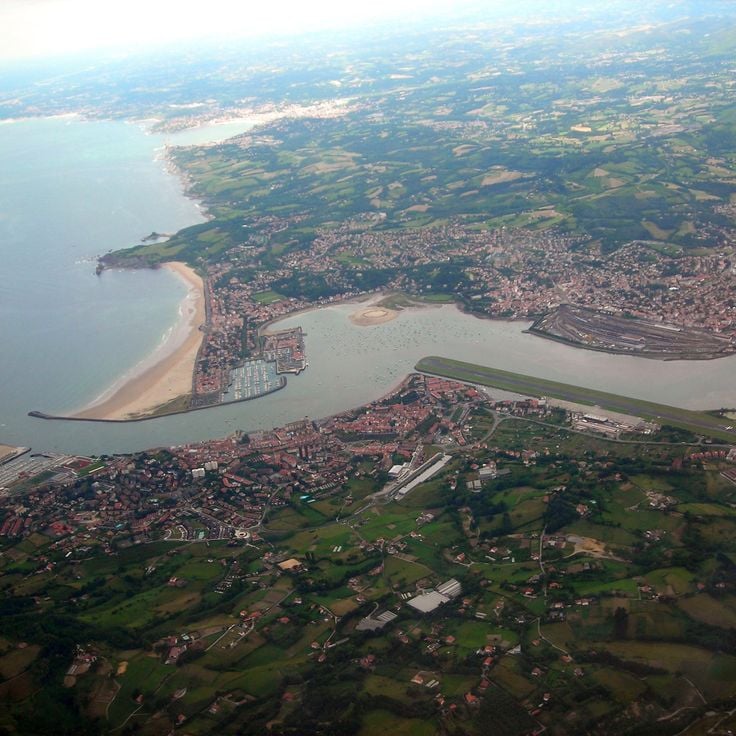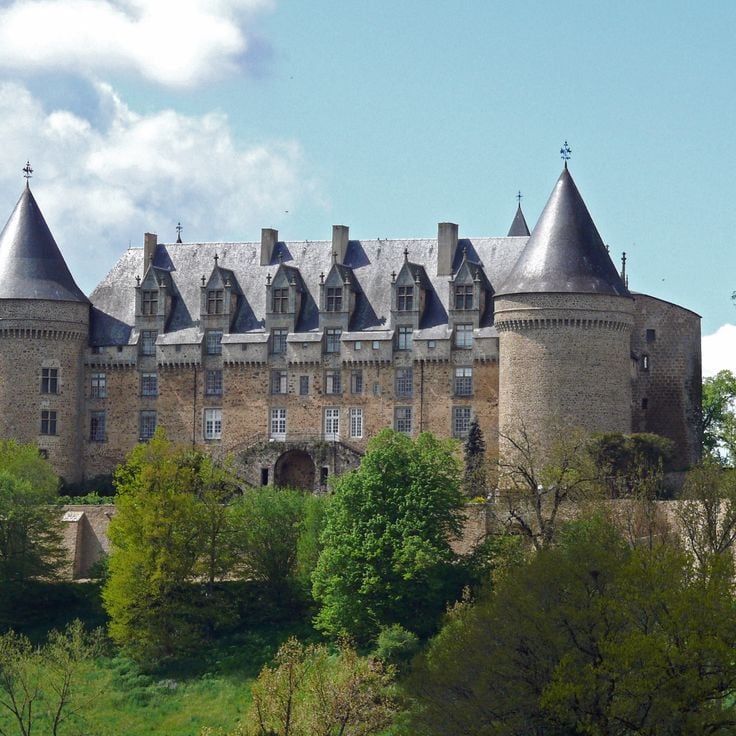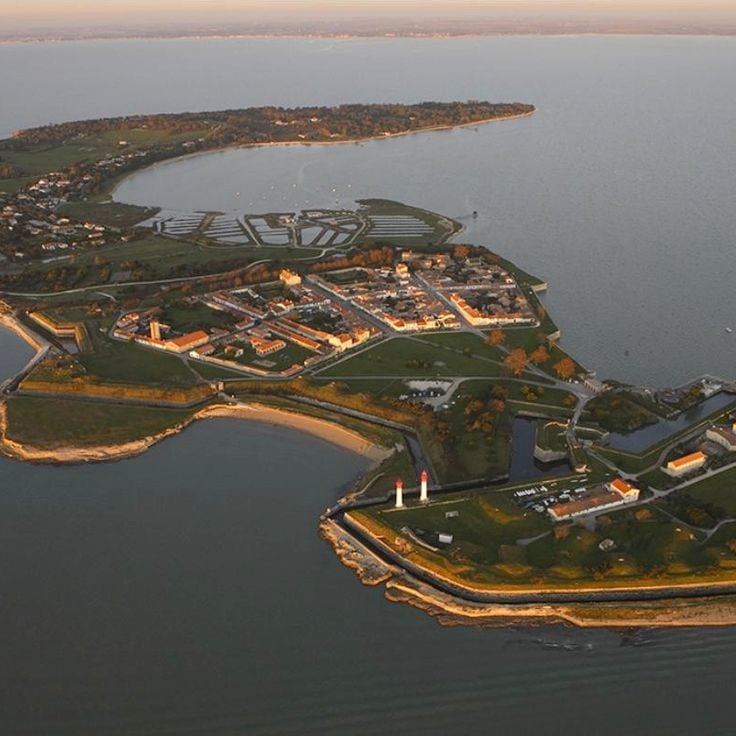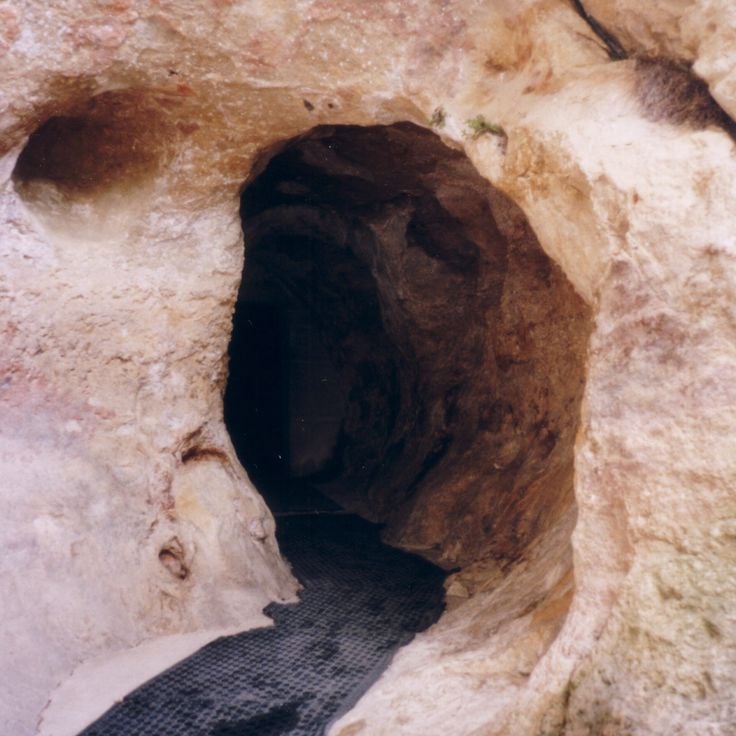The Nouvelle-Aquitaine region contains historic and natural sites often overlooked by traditional tourist routes. The area features military castles such as Bonaguil with its seven 13th-century towers, underground churches carved into limestone in Saint-Émilion and Aubeterre-sur-Dronne, as well as caves decorated with Paleolithic paintings like that of Villars. Medieval villages such as Talmont-sur-Gironde preserve their original layout and overlook the Gironde estuary. From Dordogne to the Pyrenean foothills, the region presents rock-hewn forts like Maison Forte de Reignac, Benedictine abbeys established since the 8th century in Brantôme, and Romanesque churches like the Collegiate Church of Saint-Léonard-de-Noblat. The Vayres and Roquetaillade castles demonstrate the evolution of fortified architecture from the Middle Ages to the Renaissance. These sites reflect the military, religious, and cultural history of the region and provide diverse examples of southwestern France's architectural heritage.
Bonaguil Castle is a medieval fortress from the 13th century distinguished by its seven towers and double fortified walls. This structure developed over several centuries and combines military architecture with defensive techniques from different periods. The castle is located in the Nouvelle-Aquitaine region and demonstrates the strategic importance of fortified structures between the Middle Ages and the Renaissance. The château merges Gothic elements with later fortifications and documents the evolution of military engineering in southwestern France. The various construction phases and architectural details of the site reflect the changing requirements of military defensive buildings.
This cave in the Dordogne preserves Paleolithic wall paintings created approximately 17,000 years ago, along with numerous calcite formations. The Grotte de Villars extends over 8 miles (13 kilometers) of underground passages, with 2,000 feet (600 meters) accessible to visitors. The walls display depictions of horses, bison, and human figures, while several chambers present stalagmites, stalactites, and eccentric crystal formations. The cave was discovered in 1953 and combines prehistoric art with geological phenomena in one of the region's significant karst systems.
The Château de Vayres rises on a hill above the Dordogne River and dates from the 16th century. This fortified structure combines medieval and Renaissance architecture with towers, defensive walls, and interior courtyards. The estate includes French gardens and wooded areas spanning several dozen acres (approximately 40 hectares). From its terraces, the castle provides views across the river and surrounding valley. The complex documents several centuries of French fortification architecture and noble residential design in the Gironde region.
This underground church was carved from the limestone in the 12th century, creating a large space beneath the old town. The three-nave structure covers an area of approximately 13,000 square feet (1,200 square meters) and reaches heights of up to 36 feet (11 meters). Columns hewn from the rock support the vaulted ceiling. The structure resulted from centuries of work by stonemasons who extracted the stone directly from the bedrock. The church served the community as a place of worship and displays Romanesque architectural elements carved directly into the stone.
This Benedictine abbey from the 8th century stands on the banks of the Dronne River and combines Romanesque buildings with a bell tower constructed near natural caves. The complex displays the characteristic monastic architecture of the Dordogne region and documents the religious history of Brantôme spanning more than twelve centuries. The connection between the medieval structures and the geological formations makes this abbey a significant testimony to the historical development of this part of Nouvelle-Aquitaine.
The Maison Forte de Reignac is a 14th-century fortified residence built directly into a cliff face in the Dordogne. The rooms extend across multiple levels within the rock and house original furniture, medieval weapons, and historical displays. This unusual structure combines military architecture with natural rock formations and illustrates the life of a noble family in medieval France. The defensive installations and living quarters are connected through staircases and passages carved into the stone.
This medieval village sits on a peninsula at the mouth of the Gironde estuary and preserves its 13th-century layout. The Romanesque church of Sainte-Radegonde from the 12th century stands at the cliff edge overlooking the river mouth. Cobbled lanes wind through the village, where white houses with blue shutters line the streets. The church displays typical Romanesque architecture with a fortified bell tower. Talmont-sur-Gironde originally served as a fortified location to control navigation on the Gironde.
This 12th-century monolithic church was carved 65 feet (20 meters) deep into the limestone. The interior of the underground church of Aubeterre-sur-Dronne contains a reliquary and ancient burial sites, which bear witness to the religious importance of this remarkable structure in Charente.
The Château de Roquetaillade is a 12th-century medieval fortress in Gironde that was restored in the 19th century by Eugène Viollet-le-Duc. The castle houses a collection of medieval furniture and tapestries and displays features of Romanesque and Gothic architecture. Viollet-le-Duc's renovation work introduced decorative elements in the neo-Gothic style while preserving the original defensive structures. The property includes two fortified castles, the older one dating from the 12th century and a newer one from the 14th century. The interior spaces showcase polychrome decorations and medieval artworks that were restored during the extensive 19th-century renovation.
The collegiate church of Saint-Léonard-de-Noblat dates from the 11th century and combines Romanesque and Gothic architectural elements. The octagonal bell tower rises above the structure and marks the building across the surrounding area. This church stands on a historic pilgrimage route to Santiago de Compostela and served for centuries as a stopping point for travelers. The interior displays capitals with varied decorative carvings and several reliquary shrines. The complex was expanded during the 12th century and documents the development of medieval religious architecture in the Limousin region.
This keep from the 14th century was built by Gaston Fébus and rises to a height of 131 feet (40 meters). The fortress is located in Béarn and offers wide views of the Pyrenees from its upper floors. The architecture of the keep shows characteristic features of medieval military construction in southwestern France, with massive stone walls and a square floor plan. The structure served to defend the territory and control trade routes into the mountain region.
The Château de Bridoire is a medieval castle in Dordogne that houses over 100 historical games from different centuries. The estate has been inhabited since the 15th century and features a museum with original furniture and furnishings from the 15th to 19th centuries. The castle offers visitors the opportunity to try traditional games including crossbow shooting, catapult throwing, and medieval board games. The interior rooms display authentic furniture and decorations documenting different historical periods.
The ruins of Château de Chalucet stand on a rocky outcrop in the forest south of Limoges. This 13th century fortified complex comprises two separate castles connected by a narrow ridge. The defensive towers still rise above the tree canopy, while the remains of the chapel and residential buildings reveal the strategic importance of this stronghold. The château saw repeated conflict during the Hundred Years' War and was partially destroyed during the Wars of Religion. The stone walls and towers, integrated into the natural topography, provide insight into medieval military architecture of the Limousin region.
These underground caves in the western Pyrenees were inhabited during the Stone Age and contain stone tools along with prehistoric rock drawings. The cave system extends across multiple levels and displays geological formations that developed over millions of years. The Grottes de Sare offer insight into the prehistoric settlement of the region and present archaeological finds that document human activity from tens of thousands of years ago. A guided route leads through illuminated galleries featuring stalactites and stalagmites, as well as through areas where Stone Age inhabitants found shelter.
The Château de Commarque is a medieval fortress from the 12th century that rises above the Beune Valley in the heart of the Périgord Noir. This fortified complex combines several noble houses under a common defensive system and displays typical feudal architecture with residential towers, parapet walk, and chapel. Beneath the castle lie prehistoric caves containing engraved representations from the Paleolithic period, including a notable horse relief. Archaeological excavations have revealed continuous occupation from Neanderthal times through the Middle Ages. The site connects military history with prehistoric evidence from the Dordogne region.
This path carved into rock during the 18th century was created to transport ship masts from the Pyrenean forests to the coast. The Chemin de la Mature runs along steep cliffs in the mountains of Nouvelle-Aquitaine and demonstrates the engineering capabilities of that era. The route served to move timber for the French Navy and connects the Aspe Valley with remote forested areas. Today visitors can walk this historic path and observe the rock-carved construction work and surrounding mountain terrain.
This medieval fortress stands on a limestone cliff and overlooks the Dordogne Valley from 656 feet (200 meters) above. The Château de Beynac was built in the 12th century and changed hands several times during the Hundred Years' War. The castle displays Romanesque and Gothic architectural elements, including a parapet walk, a keep, and a hall of state with 14th-century frescoes. From the ramparts, views extend across the river and the surrounding fortified villages of the region.
The Château de la Mercerie was constructed in the 20th century and contains 250 rooms (approximately 7,750 square feet or 720 square meters total). This castle in Charente features classical architecture and stands amid expansive gardens. The estate represents an example of French architectural tradition adapted to modern times. The surrounding grounds provide a setting that complements the scale and design of this residence. The château belongs to the historical and architectural heritage of the Nouvelle-Aquitaine region.
The Gorges de Kakuetta form a 1.2-mile (2-kilometer) canyon in the French Pyrenees. The gorge displays waterfalls, caves, and numerous plant species. Rock walls rise up to 656 feet (200 meters), while a footpath follows the watercourse through the canyon. The Gorges de Kakuetta provide visitors access to this geological formation and surrounding flora.
The Courant de Huchet is a nature reserve in the Landes where a river connects Lake Léon to the Atlantic Ocean. This watercourse winds through a protected forest with Mediterranean and Atlantic vegetation. The river flows through dense riparian vegetation and forms an ecological system with numerous bird species and plant communities. The area extends for several miles between inland waters and the coast and was designated to protect its natural environment. Visitors can explore the reserve through organized boat tours that follow the winding river course.
The Phare de Cordouan is a 17th-century lighthouse standing on a sandbank at the entrance to the Gironde estuary. As the oldest operating lighthouse in France, it marks the shipping route between the Atlantic Ocean and the river. The structure rises 223 feet (68 meters) above sea level and combines Renaissance architecture with later additions. The tower contains a chapel, royal apartments, and a spiral staircase leading to the lantern room. This construction is a UNESCO World Heritage site and can be reached only at low tide or by boat.
The Château de Montaigne houses the private library and writing tower of 16th-century French philosopher Michel de Montaigne. Within this residence, he composed his celebrated Essays that shaped European literature and philosophy. The preserved tower provides insight into the working conditions of the thinker, while the surrounding buildings and vineyards document his daily life. This estate combines Renaissance architecture with the intellectual history of the region and displays original inscriptions on the library ceiling beams.
This twelfth-century Cistercian monastery in the Dordogne features Gothic arches and stone carvings in its cloister. The Abbey of Cadouin was founded in 1115 and became an important pilgrimage site in medieval France. The cloister dates from the late fifteenth and early sixteenth centuries and combines Flamboyant Gothic with early Renaissance elements. Carved capitals depict religious scenes, biblical figures, and secular subjects from daily life. The monastic complex is part of the UNESCO World Heritage Sites of the Routes of Santiago de Compostela in France and preserves its original abbey church and conventual buildings. The stonework documents the transition between medieval and Renaissance art in southwestern France.
The medieval village of La Roque-Gageac sits along the banks of the Dordogne River, where stone houses from the Middle Ages were built directly against the limestone cliffs. Traditional river boats known as gabarres navigate the river, recalling the village's historical role as a trading post. The tightly clustered houses with ochre-colored roofs take advantage of the natural warmth from the rock face, which shelters them from the elements. This village extends along a narrow strip of riverbank between the water and the towering cliffs that provided a natural defensive position. The Romanesque church and remnants of a 12th-century fortress stand as evidence of the settlement's long history in this region of Nouvelle-Aquitaine.
These medieval cave dwellings in Matata were carved directly into the limestone cliffs and served as permanent residences for centuries. The rock-cut rooms feature smoke vents that allowed for heating, along with storage chambers used for food preservation. The troglodyte system demonstrates how inhabitants adapted to the geological conditions of Charente-Maritime and represents a practical building method that provided protection and stable temperatures year-round. The site fits within the historical landscape of the region, where numerous rock-hewn structures remain preserved.
Château de Puyguilhem combines 16th-century Gothic architectural forms with Italian Renaissance elements. The building demonstrates the characteristic fusion of regional construction traditions with design concepts adopted from Italy during this period. The estate includes a French formal garden surrounding the residence. As a historical structure in Dordogne, the château documents the architectural transformation in France during the reign of Francis I. The facade displays decorative elements reflecting both medieval and Renaissance stylistic features. The château's surroundings integrate into the forested landscape of the region.
The Citadel of Blaye is a 17th-century military fortification featuring 4900 feet (1500 meters) of ramparts on the banks of the Gironde River. This structure was designed by Vauban and forms part of a defense system that controlled the river estuary. The citadel includes bastions, casemates, and historic buildings within its walls. It is part of a UNESCO World Heritage site that connects three forts on both sides of the river. The fortification walls provide views over the river and surrounding countryside. Inside the citadel, residential buildings, shops, and restaurants combine historic heritage with contemporary use.
The Château des Milandes is a 15th-century Gothic Revival castle in the Dordogne associated with dancer and singer Joséphine Baker. The American-born French entertainer purchased the estate in 1947 and lived there with her adopted children from around the world. Today, the castle houses a museum dedicated to her life and career, displaying costumes, photographs, and personal belongings. The grounds include formal gardens, a falconry center, and terraces overlooking the Dordogne Valley.
Txingudi Bay is a natural area on the Basque coast that hosts a diverse bird population and various coastal habitats. This estuary connects France and Spain along the Bidassoa River, offering observation opportunities for migratory, wading, and water birds during their seasonal movements. The bay includes salt marshes, mudflats, and reed beds that serve as important resting areas for numerous bird species. Walking paths and observation points allow visitors to witness the natural processes of tides and coastal dynamics in this cross-border setting.
The Château de Rochechouart is a medieval fortress from the 13th century built on a rocky outcrop above the town of Rochechouart. The castle stands at the center of a meteorite impact crater formed 214 million years ago, with impact breccia incorporated into its foundations. Today the castle houses the Museum of Contemporary Art of Haute-Vienne, presenting rotating exhibitions. The spaces combine historic architecture with modern art, displaying 15th-century frescoes alongside collections from international artists. The complex includes several courtyards, a rampart walk, and a tower overlooking the Graine valley.
Île d'Aix is a small island in Charente-Maritime that was once visited by Napoleon Bonaparte and now serves as a quiet destination without car traffic. This island contains a museum dedicated to Napoleon, fortified military installations from the 17th century, and beaches along its roughly 3-mile (5-kilometer) coastline. Visitors reach the island by ferries from the mainland and can use walking or cycling paths that pass historic buildings, gardens, and vantage points overlooking the Atlantic. The island maintains its military past through preserved fortification walls and structures that recall its strategic importance during the Napoleonic Wars.
The Font-de-Gaume Cave is among the few caves in France with prehistoric polychrome paintings that remain open to the public. This cave extends approximately 400 feet (120 meters) into a limestone hillside and contains over 200 depictions of animals, including bison, horses, mammoths, and reindeer. The paintings date back roughly 17,000 years to the Magdalenian period. Located in the Dordogne near the town of Les Eyzies-de-Tayac-Sireuil, this site represents one of the significant examples of prehistoric art in the Nouvelle-Aquitaine region.
Similar collections
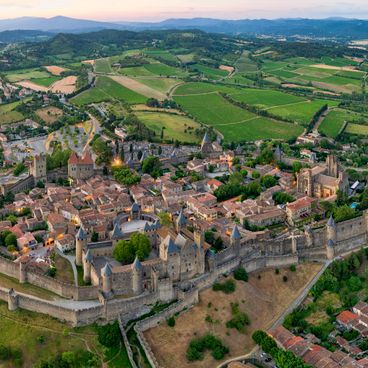
Villages and towns from medieval France: history, architecture, UNESCO sites
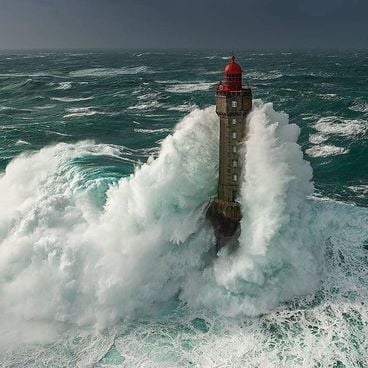
The most beautiful lighthouses of France
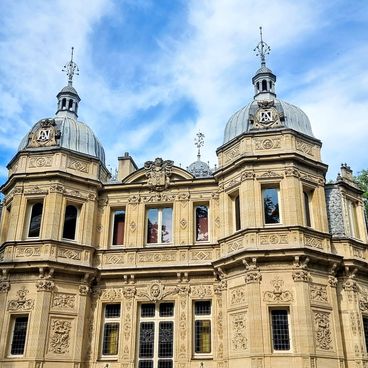
Famous writers’ houses in France

The most beautiful historic villages of France: stones, alleys, and open-air stories
